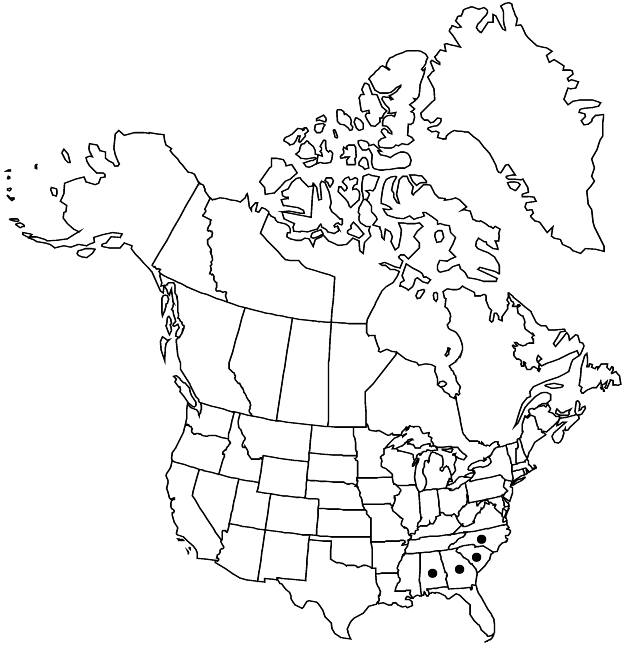Sedum pusillum
Fl. Bor.-Amer. 1: 276. 1803 ,.
Herbs, annual, multi-stemmed from base, glabrous. Stems erect, diffusely branching from base (hypocotyl extremely long), not bearing rosettes. Leaves (proximal leaves soon falling), alternate, ascending to nearly erect, petiolate (petiole 0.5–1.5 mm); blade light green, often reddish tinged, not glaucous, oblong-elliptic or ovate to lanceolate, terete, 1.6–4.3(–12) × 1.1–1.8 mm, base short-spurred, not scarious, apex rounded with minutely papillose tip, (surfaces minutely papillose). Flowering shoots erect, simple or branched, 2.5–6 cm; leaf blades oblong-elliptic or ovate to lanceolate, base short-spurred; offsets not formed. Inflorescences terminal cymes, (2–)3–6-flowered, sometimes flowers solitary, simple or 1-branched; branches recurved in bud, becoming erect in flower, forked; bracts similar to leaves. Pedicels 0.6–3.1 mm, (continuous with calyx tube). Flowers (3–)4(–7)-merous; sepals erect, connate basally, green, broadly ovate to reniform, equal, ca. 0.5 × 1 mm, apex rounded; petals divergent, distinct, white, ovate-elliptic, slightly channeled, 1.4–4.2 mm, apex obtuse; filaments white to pale reddish; anthers dark red; nectar scales white or pale yellow, subquadrate. Carpels widely divergent in fruit, distinct, pale brown. 2n = 8.
Phenology: Flowering early spring.
Habitat: Shallow soils on granite flatrocks
Elevation: 100-500 m
Distribution

Ala., Ga., N.C., S.C.
Discussion
Sedum pusillum is known only from thin soil on granite flatrocks of the southeastern Piedmont. The name Diamorpha cymosa has been incorrectly applied to D. smallii Britton (R. L. Wilbur 1988).
Selected References
None.